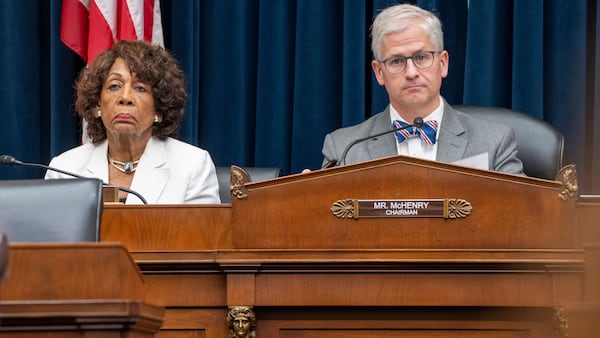- The Securities and Exchange Commission wants to break up exchanges offering multiple functions.
- Market forces may eventually bring in protections even if SEC Chair Gary Gensler fails in his lawsuits against Coinbase and Binance
- Whether from regulators or rivals, a reckoning is coming.
If it looks like an exchange, calls itself an exchange, but isn’t regulated as an exchange, it’s not an exchange.
So says Niki Beattie, founder of advisory firm Market Structure Partners, of crypto platforms.
“Calling yourself an exchange is pie in the sky, really, unless you’re regulated,” Beattie told DL News.
As scandals mount and regulators face more pressure to further crack down on crypto firms, giants including BlackRock, Fidelity, and Citadel Securities are widening their offerings and threatening crypto-native business models.
Market forces may eventually bring in protections even if Securities and Exchange Commission Chair Gary Gensler fails in his lawsuits against Coinbase and Binance. And if user protection doesn’t entice customers, then lower fees might.
NOW READ: ‘Not a warm and fuzzy guy:’ Gary Gensler’s past sheds light on his firm stance on crypto
Whether from regulators or rivals, a reckoning is coming.
Exchange-traded funds, prime brokerage, execution, and clearing offerings have popped up in the crypto industry lately, noted Crossover Markets CEO Brandon Mulvihill.
“The institutional market is resetting the foundation of crypto market structure,” he told DL News, adding that it portends not only transparency and safety, but “massively greater competition.”
In traditional finance, firms that offer different market functions must be entirely separate entities, Beattie said. Exchanges and custodians have different licences and must be capitalised separately, maintaining sufficient funds to operate independently, which will protect users.
The SEC argues that Coinbase and Binance, among other things, jumble functions of brokers, exchanges and clearing agencies together. It claims Binance also co-mingled client assets.
The exchanges say they have tried to register with the regulator and say the agency is harming users.
NOW READ: BlackRock and Fidelity hit Bitcoin ETF snag amid graveyard of past applications
By offering multiple functions under one roof, these firms have removed layers and middlemen that, while clunky and cumbersome, work to protect users, Beattie said.
EDX Markets, the exchange venture backed by Citadel Securities, Fidelity and Charles Schwab among others, touts its “safe and compliant” features.
“Ultimately, if crypto is to survive it’s going to end up looking a lot more like TradFi,” Sean Tuffy, former director of market and regulatory intelligence at Citigroup, told DL News.
Eleftheria Panagiotopoulou, of Oxford Business School told DL News that some level of regulatory intervention is imminent, but warned against “dismantling multifunctional crypto firms” and argued for integration.
Calls for regulation
Whatever the future holds for crypto exchanges, the crypto industry is facing hurdles and lessons already being learned by TradFi, said Tuffy.
Calls for regulation are growing louder. At the end of June, Nevada regulators placed Prime Trust into receivership, saying it used customer money to buy cryptocurrencies to satisfy withdrawals.
It follows a banking crisis in March, the fall of FTX in November and the implosion of Terra and Three Arrows Capital last summer.
NOW READ: Hackers exploit smart contract weakness to raid unofficial AzukiDAO’s airdrop of BEAN tokens
“For the crypto industry, the concern should be that the more obvious malfeasance like Prime Trust are revealed, the tighter the regulatory screws are likely to be turned,” Tuffy said.
When it comes to traditional finance, Tuffy said: “There’s a segregation of duties and exchanges are exchanges, custodians are custodians, everyone does [know your customer checks], and client money rules apply.”
Retail vs. Institutional
The lack of middlemen sullying transactions with slow and cumbersome controls is a feature, not a bug, of crypto.
Bitcoin was envisioned to eliminate third parties — users are able to trade seamlessly with one another. That user-first nature has led to a conflict in how the market is structured.
For retail clients, crypto offers ease of access. But for institutions, it’s not as flexible as traditional markets and is a KYC nightmare.
Split functions are necessary, Brandon Mulvihill told DL News, adding that, “crypto exchanges are, first and foremost, retail and/or institutional brokers operating four to five business lines.”
“The nuance to each business line requires specific regulatory structures and requirements to help safeguard the consumer, the institution itself, and the broader marketplace,” Mulvihill added.
When it comes to institutions, operating multiple regulated functions, walling off each business line helps to mitigate unintended conflicts of interest, he said.
The model where a firm operates multiple functions is popular among users who prefer simplicity over other value propositions, like flexibility. These tend to be retail clients that prefer a “one-stop shop” he said.
A disadvantage of this model? The customer only has access to the products on offer at that firm, Mulvihill noted.
“In Tradfi, market participants may custody at one institution, while trading on multiple venues, and net settling their entire activity with an entirely different counterparty,” he said, the “flexibility provides operational efficiency.”
Scandals and lawsuits
Without clear guardrails, more scandals may be looming.
With settlement, custody and trading all under one organisation, there is a risk of front-running, co-mingling of client funds, and, notably, the risk that clients’ funds cannot be independently verified, crypto index trading firm Trakx’s Ryan Shea told DL News.
Last month, a report from the Financial Times revealed how Crypto.com operated an internal trading desk and traded against clients. The exchange confirmed it had an internal market maker, but that it treated it like any third party.
“This is not a controversial practice,” the company told the FT.
The SEC sued Coinbase in June. The regulator’s issue: It’s not registered to offer brokerage services, exchange services, or clearing. These functions are typically carried out by separate entities in equity markets.
The SEC wants to separate these functions to offer crypto users more safety against the “nefarious practices we saw exposed last year in the industry,” Shea said, “even though creating additional intermediaries is potentially more inefficient.”
To share tips or information about crypto’s regulatory reckoning or another story, please contact the author at adam@dlnews.com.



